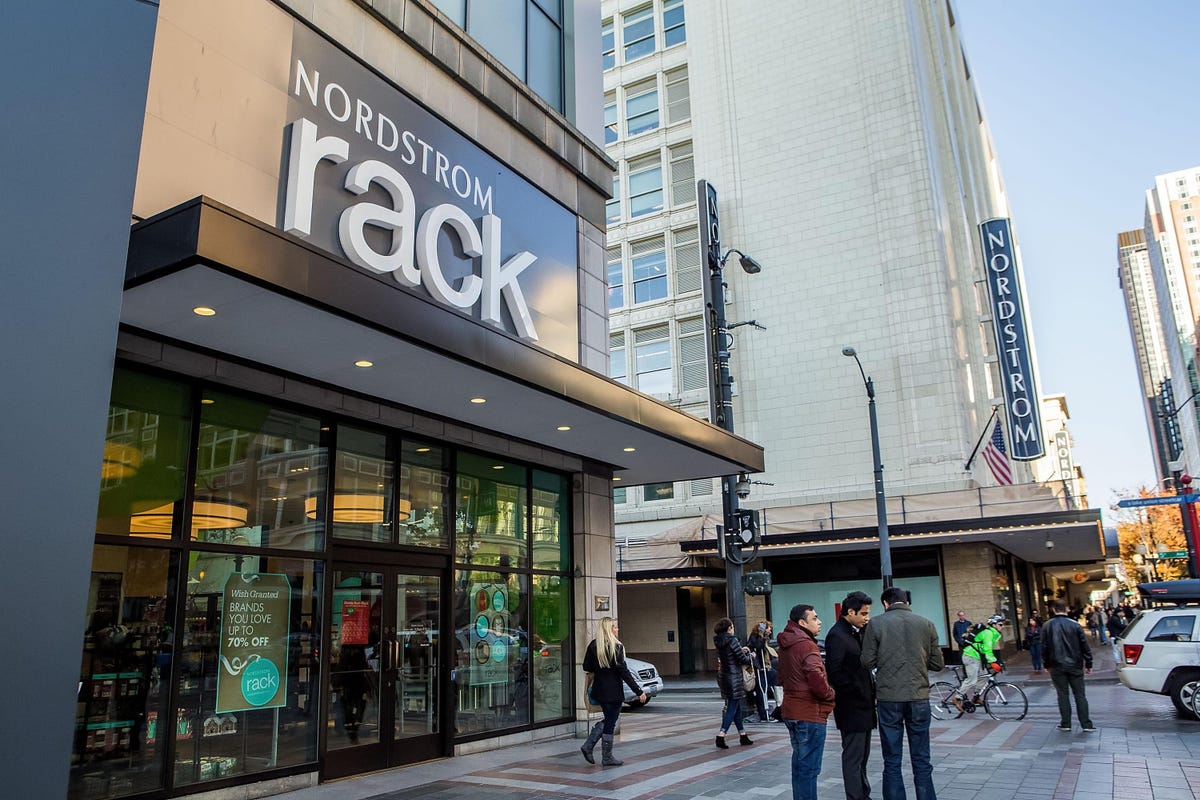
SEATTLE, WA – NOVEMBER 12: Exterior photos of Nordstrom Rack in downtown Seattle with Nordstrom … [+]
It all started nearly a year ago with news that Saks was pondering spinning out its e-commerce operations from its legacy brick-and-mortar business. And as the stock market moved ever higher—and digitally native darlings like Warby Parker and Allbirds went public at (arguably) frothy valuations—Macy’s
Now, in a twist to the emerging “unlocking shareholder value” playbook, Nordstrom is rumored to be evaluating a spin out its off-price Nordstrom
The notion that e-commerce and brick-and-mortar stores are separate businesses is clearly nutty and flies in the face of every thing we’ve learned about retail shopping behavior during the past two decades. As I’ve more or less made a career out of slaying this particular dragon, I’ll leave curious readers to seek out more on this topic (though here’s a teaser). But to suffice it to say that such efforts largely take advantage of a glitch in the stock market matrix and a fundamental misunderstanding of how modern retail actually works. They do precisely nothing for customers and add unnecessary cost and mind-numbing complexity (for example, the Saks split reportedly involves some 340 inter-company service agreements).
Nordstrom’s potential action, while similar at face value, is a bit more interesting and nuanced. At one level, few things do more to win, grow and keep customers than a remarkably powerful brand story. Cast in that light, the idea that Nordstrom Rack can operate independent of the mothership seems as silly as Coke announcing spinning out Diet Coke. Less abstractly, the off-price division benefits from leveraging Nordstrom’s corporate infrastructure and resulting economies of scale and scope in key areas like supply chain, marketing, information technology, product sourcing, and the like. Importantly, management has also made a big deal of how the Rack division helps acquire younger and generally more price sensitive price shoppers eventually to have many of them “graduate” to Nordstrom’s full-price business.
This portfolio approach to building share of wallet with customers with high lifetime value is, at its core, fundamentally sound—and one can easily imagine the significant customer insight benefits that can be gleaned. Moreover, because of management’s historical confidence in the complementarity of the formats, Nordstrom often locates Rack stores in close proximity to its department stores where it can, at least in theory, maximize local market performance. In fact, at multiple points during the past year, the company made a big point of highlighting how the Rack was an essential part of an “integrated strategy.” So the reversal of direction is more than a bit curious.
MORE FOR YOU
To be sure, Nordstrom’s recent performance has been decidedly lackluster. Some of this is due to the relative maturity of the overall brand; some of it is clearly due to COVID headwinds, but a lot can be tied to how the Rack has gone from being the jet fuel for new store openings and same-store sales growth to now seeming like the weakest star in the constellation. Given continuing retail spending volatility and the financial markets’ apparent unending appetite for financial engineering, management is wise to consider various strategic options. And with the Rack’s (mostly) different core customer segments and product mix, it is a bit easier to imagine how it could operate as a stand-alone entity.
But let’s be clear: the Rack’s struggles have almost everything to do with challenging market conditions and the over-expansion of “faux clearance” formats that created a dynamic of too much capacity and too little great merchandise chasing a customer base that is often “trading down” to more affordable and more convenient options (TJ Maxx, Marshall’s et al). The strategic response to this set of problems is for Nordstrom’s portfolio to become more clearly differentiated, focused and coordinated. At the same time, the company must better leverage customer insight and its supplier network to more precisely target its offerings to deliver maximum customer relevancy and remarkability.
Spinning out Nordstrom Rack might cool the jets of activist investors, raise some needed cash and line the pockets of Nordstrom’s advisors. But it’s hard to see how a different set of owners or capital structure delivers any true synergy or better customer value. If the Rack thrives outside of the Nordstrom corporate umbrella it will be either the failure of management action or the unfortunate kowtowing to Wall Street nonsense.




